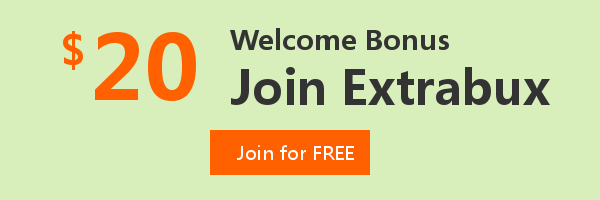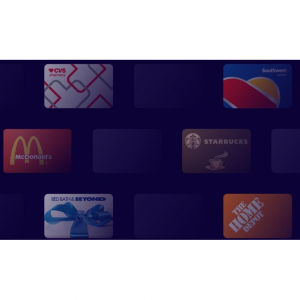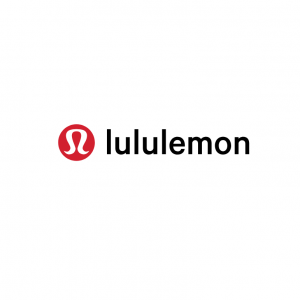
The Wall Street Journal vs. Financial Times vs. The Economist: Main Differences in Content and Quality 2025
Wall Street Journal Review
The Wall Street Journal is a daily newspaper first published in 1889. Today, it's available both in print and online. These days you can get the digital paper on the web or through a mobile app.
WSJ is one of the most popular in the United States. In 2018, the company claimed a daily circulation of 2.4 million copies, of which 1.6 million are digital subscribers. It ranks as one of the most-read newspapers in the U.S. just about any way you measure it. It is published in New York City and owned by News Corp. News Corp is controlled by the conservative Murdoch family, who also own Fox News. While The Wall Street Journal does tend to favor conservative, pro-business positions, it's widely respected and typically doesn't show the heavy biases seen at Fox News.
The Wall Street Journal is a must-read publication for any active investor. Passive investors who want a better understanding of the economy, business and the forces that influence their money and investments would also likely benefit from a subscription.

Pros & Cons
| Pros | Cons |
|
|
|
|
| |
| |
| |
| |
| |
| |
| |
|
Financial Times Review
The Financial Times (FT), based in London, is a British daily newspaper printed in broadsheet and also published digitally that focuses on business and economic current affairs. In 2023, it was reported to have 1.3 million subscribers of which 1.2 million were digital. The newspaper has a prominent focus on financial journalism and economic analysis rather than generalist reporting, drawing both criticism and acclaim.
The FT is split into two sections. The first section covers domestic and international news, editorial commentary on politics and economics from FT journalists such as Martin Wolf, Gillian Tett and Edward Luce, and opinion pieces from globally renowned leaders, policymakers, academics and commentators.
The second section consists of financial data and news about companies and markets. Despite being generally regarded as primarily a financial newspaper, it does also contain TV listings, weather and other more informal articles. In 2021 and 2022, the outlet began focusing more on the cryptocurrency industry, launching a Digital Assets Dashboard, publishing multi-asset crypto indexes, starting a Cryptofinance newsletter dedicated to digital assets, and recruiting more journalists to cover the sector.
According to the Global Capital Markets Survey, which measures readership habits among most senior financial decision makers in the world's largest financial institutions, the Financial Times is considered the most important business read, reaching 36% of the sample population, 11% more than The Wall Street Journal (WSJ), its main rival.

Pros & Cons
| Pros | Cons |
|
|
|
|
| |
| |
| |
| |
| |
| |
|
The Economist Review
The Economist is a world-renowned global affairs publication. It aims to decipher global news and trends beyond the actual headlines. The Economist’s daily digital news team offers in-depth reports on all the latest events related to American politics, finance, technology, and more. With incisive coverage, users can get a fresh perspective on the recent developments across the globe. The Economist offers comprehensive insights, fact-checked coverage, and specialist opinion.
The Economist believes in free trade, free markets, and a generally pro-laissez-faire editorial position. Most articles follow a centrist political view. In line with free-market economics, viewpoints are generally favorable toward free trade, globalization, free immigration, and deregulation. While it has strong economic and political editorial positions, most articles and content are unbiased. Part of this may be driven by the publication's tradition of not publishing author bylines. All articles are written anonymously. The Economist has several recurring sections to look for when you pick up an issue or view it online. Sections include:
The world this week: The first section shares top news on politics and business from the previous week.
World regions: This includes sections for the United States, the Americas, Britain, Europe, Middle East & Africa, Asia, China, and others. It contains important news that could affect portfolios around the world.
Finance and economics: Read insights and analysis of the numbers that make the global economy go round.
Science and technology: This section explores new research and discoveries that can have a major influence on investors' and everyone's lives.
And other sections are regularly featured as well. This list gives you a general idea of the types of content covered by the publication.

Pros & Cons
| Pros | Cons |
|
|
|
|
| |
| |
|
Saving Tip: If you like online shopping, don't forget to sign up at Extrabux!(What is Extrabux) , then you can enjoy up to 30+% cashback on your purchase from Extrabux! Sign-Up Bonus: Free to join it & get $20 welcome bonus! Student Benefits:As long as you are a student at school, you can get a free whole year long VIP Card worth $199.
Extrabux.com cooperates with many merchants, such as: The Wall Street Journal ($2.5 cashback), Rimowa (Up to 3.5% cashback), Walmart (Up to 4% cashback), Sephora(4% -5% cash back), Moosejaw (5% -6% cash back), LOOKFANTASTIC (Up to 10% cash back), Sam's Club (Up to 15% cashback), Norton(Up to 20% cashback), Microsoft (Up to 7% cash back) and so on. You can save on buying daily necessities, fashion, beauty, electronic products, broadband installation, mobile communication, air tickets, hotels and other aspects of life!
Wall Street Journal vs. Financial Times vs. The Economist
| WSJ | FT | The Economist | |
| Price | From $1/week for 1 year; Billed as $4 every 4 weeks. | From $8.25 per month for first year | From $9.54/month for first year |
| Digital | ✔ | ✔ | ✔ |
| ✔ | ✔ | ✔ | |
Corporate Subscriptions | ✔ | ✔ | ✔ |
Student Subscriptions | ✔ over 20% off | ✔ 50% off | ✔ 75% off Digital |
Amenity Subscriptions | ✔ | ✔ | × |
Professional Subscriptions | ✔ | ✔ | ✔ |
1. Price
The Economist>Financial Times>Wall Street Journal
| Plan | Price |
| WSJ Digital | $1/week for 1 year; billed as $4 every 4 weeks. |
| WSJ+ | $1.75/week for 1 year; billed as $7 every 4 weeks. |
| Student Digital Pack | $2/Month for 1 Year; $24 for 1 Year. |
| Plan | Price |
| Standard Digital | $319 for your first year |
| Premium Digital | $75 per month |
| $99 for your first year | |
| Student Standard Digital | Save 50%, $209 per year |
| FT Professional Subscriptions | Pay per reader |
| Plan | Price |
| Digital (Annual) | $9.54/month for first year |
| Digital + Print (Annual) | $13.29/month for first year |
| Digital (Annual) for students | 75% off for students; $57.25/year |
| Espresso (Annual) | Free for students |
Wall Street Journal is the cheapest. Some reader says: "FT is super expensive and the wsj has offers for a few dollars a month. You definitely get what you pay for. 99 out of 100 finance professionals would prefer ft. The WSJ is just a household name from old times. And FT is ‘reassuringly expensive’. They hire real journalists, and charge people real money to read what they say. Unlike far too many newspapers they don’t rely extensively upon freelancers and guest columnists to fill out content. Nor do they try and give away stuff for free in order to build up an artificial subscriber base. If you want serious news, you pay for serious news and you get serious news."
For Economist, it’s also excellent value for money. Someone says: "The Economist is by far the most reliable magazine of this type in the world. It’s opinion writers are among the very best anywhere. It is also an example of how to write English. In this regard it is held up by learned professors as easily the best."
2. Content
Some users shared that sometimes the Wall Street Journal can be a bit fluffy, especially compared to papers such as the Financial Times or the Economist.
The Wall Street Journal is based in the United States and tends to have a stronger focus on American markets and companies, although it covers global economic news extensively as well. The Wall Strret Journal aims to be everyone’s second newspaper. That is, they realized decades ago that the chief executive of a Fortune 500 company and the guy who runs a hardware store on Main Street have a common need for basic business news.In addition, the Journal’s news pages are, for the most part, designed to be an honest broker of information.
Obviously the FT is biased towards business and finance, with little in the way of human interest or sport for example, and it is geared towards a more high-brow readership, but for objective, analytical and well-written reporting on business and politics it is head and shoulders above the rest I would say. I also like the Life and Arts section with the weekend edition which has excellent articles and reviews and the polymath crossword.
The FT concentrates more on factual reporting and leave opinions to the specific opinion pieces. The FT on the other hand doesn’t try to go after the mass market; it assumes a certain level of knowledge and interest in business, finance and world affairs.
The Economist, is a journal concerned primarily with business and economics. The Economist is more a magazine, a bit more oppinion lead and goes into the depth of a topic more. It is better able to give deeper background.
The Economist delivers news in different domains, including politics, business, technology, sports, and more. It is a valuable source for anyone interested in in-depth analysis of the headlines. Furthermore, It is best known for delivering the latest and highest-quality content.
Both the FT and Economist are high quality publications, and both fairly centrist in their approach. The FT does concentrate more on factual reporting and leave opinions to the specific opinion pieces. The Economist is a bit more nuanced. It leans left on social issues, but leans right on economic ones. And it definitely leans more towards commentary than pure reporting.
3. History
The Wall Street Journal is a news organization with a long history. It's been printed continuously since July 8, 1889. The paper was founded by Charles Dow, Edward Jones, and Charles Bergstresser. You may recognize some of those names. Dow Jones & Company is still the name of the parent company of The Wall Street Journal. (News Corp owns Dow Jones & Company.) The Dow Jones Industrial Average, a major stock index, also bears the name.
(Side note: The Edward Jones investment company was founded by a different Edward Jones and has no relationship to the paper.)
![]()
Over the years, The Wall Street Journal has been controlled by Clarence Barron, who launched the weekly Barron’s magazine, and later the wealthy Bancroft Family. In 2007, Rupert Murdoch purchased the controlling interest to expand his growing media network.
The Journal has won 37 Pulitzer Prizes, one of the most prestigious journalism awards, in its 129 years.
The paper was founded in January 1888 as the London Financial Guide before rebranding a month later as the Financial Times. It was first circulated around metropolitan London by James Sheridan, who, along with his brother and Horatio Bottomley, sought to report on city business opposite the Financial News. The succeeding half-century of competition between the two papers eventually culminated in a 1945 merger, led by Brendan Bracken, which established it as one of the largest business newspapers in the world.
Globalisation from the late 19th to mid-20th centuries facilitated editorial expansion for the FT, with the paper adding opinion columns, special reports, political cartoons, readers' letters, book reviews, technology articles and global politics features. The paper is often characterised by its light-pink (salmon) newsprint. It is supplemented by its lifestyle magazine (FT Magazine), weekend edition (FT Weekend) and some industry publications.
The editorial stance of the Financial Times centres on economic liberalism, particularly advocacy of free trade and free markets. Since its founding, it has supported liberal democracy, favouring classically liberal politics and policies from international governments; its newsroom is independent from its editorial board, and it is considered a newspaper of record.

The Economist traces its beginnings to 1843. It has developed a strong reputation for influence coverage of global capital markets, businesses, and political developments in its 177 years. The magazine was initially called The Economist: A Political, Commercial, Agricultural, & Free-Trade Journal. James Wilson founded the publication. Circulation reached nearly 2,000 in its first year.
The magazine began a significant growth period in the 1930s when it reached 10,000 weekly readers. And about half of these were international. It reached 50,000 readers in the 1950s and 100,000 in the 1970s and exceeded the million-weekly circulation mark in 2005.
A group of private shareholders owns The Economist. These include Exor and a list of independent shareholders, some of which are on the publication's staff.
Roughly 85% of print readers have liquid assets of more than $100,000. And just over half have liquid assets of at least $500,000. If you read it, you are in elite company.

4. Features
Since 1980, the Journal has been published in multiple sections. The Journal increased its maximum issue length to 96 pages, including up to 24 color pages, in 2002. With the industry-wide decline in advertising, the Journal in 2009–10 more typically published about 50 to 60 pages per issue.
As of 2012, The Wall Street Journal had a global news staff of around 2,000 journalists in 85 news bureaus across 51 countries. As of 2012, it had 26 printing plants. Its Asia headquarters is in Hong Kong, but will move to Singapore after it stated it would do so in 2024. Regularly scheduled sections are:
Section One: Every day; corporate news, as well as political and economic reporting and the opinion pages
Marketplace: Monday through Friday; coverage of health, technology, media, and marketing industries (the second section was launched June 23, 1980)
Money and Investing: Every day; covers and analyzes international financial markets (the third section was launched October 3, 1988)
Personal Journal: Published Tuesday through Thursday; covers personal investments, careers and cultural pursuits (the section was introduced April 9, 2002)
Off Duty: Published Saturdays in WSJ Weekend; focuses on fashion, food, design, travel and gear/tech. The section was launched September 25, 2010.
Review: Published Saturdays in WSJ Weekend; focuses on essays, commentary, reviews and ideas. The section was launched September 25, 2010.
Mansion: Published Fridays, focuses on high-end real estate. The section was launched October 5, 2012.
WSJ Magazine: Launched in 2008 as a quarterly, this luxury magazine supplement distributed within the U.S., European and Asian editions of The Wall Street Journal grew to 12 issues per year in 2014.
In addition, several columnists contribute regular features to the Journal opinion page:
Mondays | Americas by Mary O'Grady |
Wednesdays | Business World by Holman W. Jenkins Jr. |
| Thursdays | Wonder Land by Daniel Henninger |
Fridays | Potomac Watch by Kimberley Strassel |
| Weekend Edition | Rule of Law, The Weekend Interview (variety of authors), Declarations by Peggy Noonan |
In addition to editorials and columns from the printed newspaper, wsj.com carries two daily web-only opinion columns:
Best of the Web Today by James Taranto, the editor of the former OpinionJournal.com website (no subscription required).
Political Diary edited by Holman W. Jenkins Jr. and featuring John Fund (separate subscription required).
In addition to these regular opinion pieces, on Fridays the Journal publishes a religion-themed op-ed, titled "Houses of Worship", written by a different author each week. Authors range from the Dalai Lama to cardinals.
The FT is split into two sections. The first section covers domestic and international news, editorial commentary on politics and economics from FT journalists such as Martin Wolf, Gillian Tett and Edward Luce, and opinion pieces from globally renowned leaders, policymakers, academics and commentators.
The second section consists of financial data and news about companies and markets. Despite being generally regarded as primarily a financial newspaper, it does also contain TV listings, weather and other more informal articles. In 2021 and 2022, the outlet began focusing more on the cryptocurrency industry, launching a Digital Assets Dashboard, publishing multi-asset crypto indexes, starting a Cryptofinance newsletter dedicated to digital assets, and recruiting more journalists to cover the sector. About 110 of its 475 journalists are outside the United Kingdom. Key features as follow:
|
|
|
|
|
|
|
|
|
The Economist's primary focus is world events, politics and business, but it also runs regular sections on science and technology as well as books and the arts. Approximately every two weeks, the publication includes an in-depth special report (previously called surveys) on a given topic. The five main categories are Countries and Regions, Business, Finance and Economics, Science, and Technology. The newspaper goes to press on Thursdays, between 6 p.m. and 7 p.m. GMT, and is available at newsagents in many countries the next day. It is printed at seven sites around the world.
Since July 2007, there has also been a complete audio edition of the paper available 9 pm London time on Thursdays. The audio version of The Economist is produced by the production company Talking Issues. The company records the full text of the newspaper in MP3 format, including the extra pages in the UK edition. The weekly 130 MB download is free for subscribers and available for a fee for non-subscribers. The publication's writers adopt a tight style that seeks to include the maximum amount of information in a limited space. David G. Bradley, publisher of The Atlantic, described the formula as "a consistent world view expressed, consistently, in tight and engaging prose".
5. Quality
The Financial Times & The Economist are significantly higher in quality and reliability (factual and unbiased reporting) than the current Wall Street Journal, which has gone downhill quite a bit. The Wall Street Journal is not terrible by any stretch.
If you want finanial news, try the Economist which is similar in focus to the Financial Times and comparable in terms of factual and unbiased reporting. The Financial Times is source of financial news, is rather different from The Economist. It is much more about the actual news than analysis.
6. Which One Is Best For You?
The Wall Street Journal covers a wide range of topics with a great online system with constant updates. However, some reader says sometimes it can be a bit fluffy, especially compared to papers such as the Financial Times or the Economist.
The Wall Street Journal is based in the United States and tends to have a stronger focus on American markets and companies, although it covers global economic news extensively as well. If you’re looking for detailed coverage of US business and finance, The Wall Street Journal might be more suitable.
The Financial Times is widely considered as one of the best UK newspapers for its comprehensive coverage of global business news, financial markets, and economic trends. It also provides insightful analysis and commentary on key issues affecting the business world, making it a valuable source for investors and business professionals.
Its reputation is built on its comprehensive coverage of global business news, analysis and opinion. The newspaper is renowned for its in-depth reporting, which is both factual and unbiased. The Financial Times is also known for its high-quality journalism, which is backed by a team of experienced journalists and editors. The newspaper's reporting is based on extensive research and analysis, which ensures that its readers are provided with accurate and up-to-date information.
The Economist is generally considered a reputable and reliable source of news and analysis. It is known for its in-depth coverage of global events, economics, politics, and culture. Key points about its reliability include:
Editorial Standards: The Economist adheres to high journalistic standards, with a commitment to fact-checking and balanced reporting.
Global Perspective: Its international focus provides insights into global issues, making it valuable for understanding different viewpoints.
Expert Analysis: The publication often features analyses from experts in various fields, contributing to a deeper understanding of complex topics.
Independent Ownership: The Economist is owned by a private company, which helps maintain editorial independence.
Reputation: It has a long-standing reputation in journalism since its founding in 1843, and it is often cited by other media and scholars.
However, like any publication, it's important to consider multiple sources and perspectives to get a well-rounded view of any issue.
The Economist has historically been rated as very reliable, inasmuch as it isn’t biased politically to left or right. It’s consistently factually correct and well sourced, and uses neutral language, so is not seen to be attempting to influence the reader in any particular direction. Its reporting is well balanced , and scores very high in fact checking.
Read more:
Samyang Buldak Cream Carbonara vs. Carbonara vs. Rose: Differences and Reviews 2025
Kohler vs. TOTO vs. American Standard: Which Brand is Best for Toilet?
Logitech MK235 vs. MK270 vs. MK295: Which Makes the Best Budget Wireless Keyboard and Mouse Combo?
7 Best Gift Card Exchange Sites - Buy, Sell and Trade Discount Gift Card Safely and Instanly!
Boost vs. Ensure vs. Glucerna vs. Premier Protein: Which Protein Shake is Best for You?
26 Best Sites to Buy and Sell Used Stuff 2025

Extrabux is an international cashback shopping site, offering up to 30% cashback from 10,000+ Stores!
Squarespace, SkinStore, MATCHESFASHION, The Wall Street Journal, NordVPN, Visible, Armani Exchange, Sam's Club, PUMA, AliExpress, Card Cash, NET-A-PORTER, Udacity, Udemy, Selfridges, LOOKFANTASTIC, Vimeo, Coach Outlet, lululemon, PrettyLittleThing, Booking.com, Ripley's Aquarium, iHerb, Groupon, etc.
Join to get $20 welcome bonus now! (How does Welcome Bonus work?)
Recommendation
-

Is Turkish Airlines Good for International Flights?
-

10 Best & Stylish Winter Coats for Women on NET-A-PORTER in 2025
-

Top & Best 12 Sneaker Apps/Websites for Raffles, Releases & Restocks in 2025
-

7 Best Gift Card Exchange Sites - Buy, Sell and Trade Discount Gift Card Safely and Instanly!
-

Top 9 Professional Skincare Brands for Licensed Estheticians 2025











